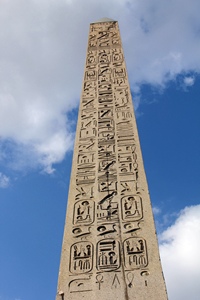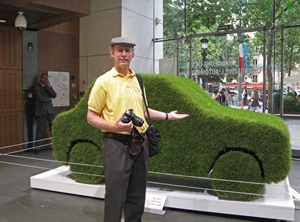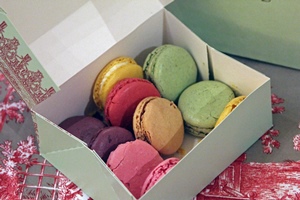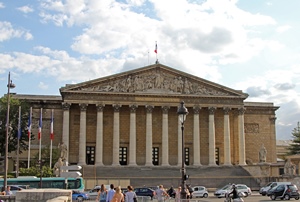
National Assembly Building Med Lrg Xlg |
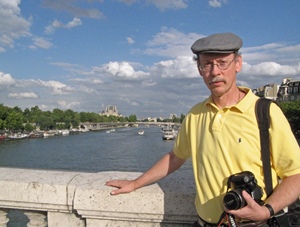
Bob on Pont de la Concorde Med Lrg |
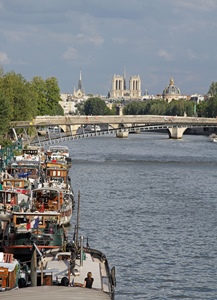
Boats and Seine Med Lrg Xlg |
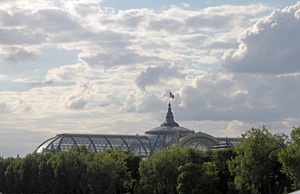
Grand Palais from Pont de la Concorde Med Lrg Xlg |
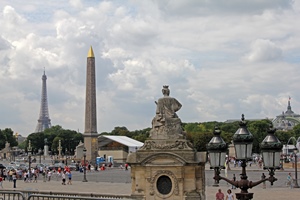
Place de la Concorde Med Lrg Xlg |
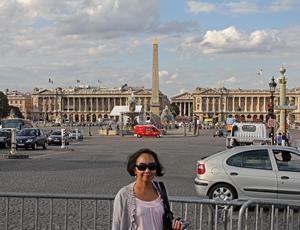
Nella and Place de la Concorde Med Lrg Xlg |
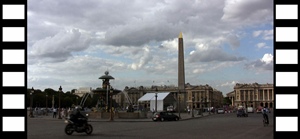
Place de la Concorde MP4-Sml MP4-Med WMV-HD |
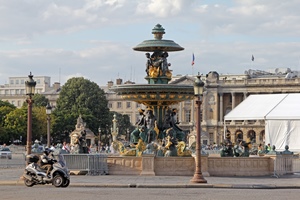
Fountain of the Seas Med Lrg Xlg |
The Avenue des Champs-Élysées is a wide, perfectly straight street that runs for 1.2 miles between the Place de la Concorde and the Arc de Triomphe. An imaginary line continuing southeast from the end of the street passes through the Place de la Concorde and the Jardin des Tuileries, and ends up in the courtyard of the Louvre. The Champs-Élysées (French for "Elysian fields", though no fields are in evidence, Elysian or otherwise) has absurdly wide sidewalks and is largely famous for the high-end shops lining them. But rules are made to be broken, and less patrician stores have been moving in of late, and there is even a McDonald's near the northwest end. We also visited a Renault dealership which had a weird grassy car on display. There is a Champs-Élysées web site, on which you can find the complete list of shops. Near the southeast end of the street there aren’t many shops – instead there are parks and exhibition halls. And a lot of Tour de France seating, during our visit.
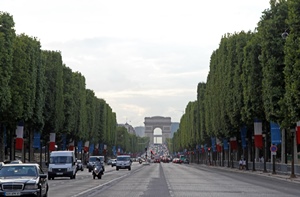
Avenue des Champs-Élysées Med Lrg Xlg |
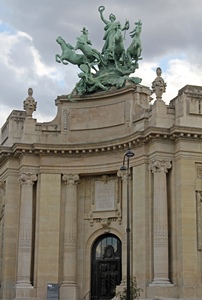
Grand Palais Entrance Med Lrg Xlg |
But Nella was intent on visiting one shop in particular. Nella is prodigiously talented in the kitchen, and one of the things she’s been experimenting with over the past few years is French macaroons – not the coconutty American cookies, but the crispy but delicate meringue cookie-like things also known as les macarons. Possibly the world center of les macarons, and the inventor of them in their modern form, is a Paris shop called Ladurée, and they have a tea room/restaurant on the Champs-Élysées at the corner of Rue Lincoln. We dropped in and were amazed at the variety of colors and flavors of macarons, as well as the many other mouth-watering pastries on display. We took a few pictures, until we were informed that photography was forbidden. You can find more pictures and info at their web site, if you're so inclined. Discouraged from photography, we bought a box of selected macarons to go. We greedily opened the box back out on the street and tasted a couple. They were awfully good. But Nella’s are getting there…
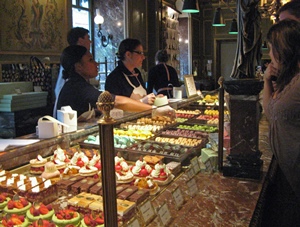
Inside Ladurée Med Lrg |
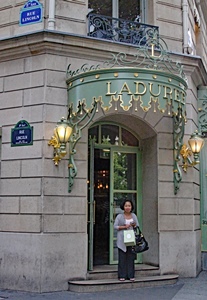
Nella and Ladurée Med Lrg Xlg |
Eventually we ran out of Champs-Élysées and found ourselves staring at the Arc de Triomphe. It wasn’t dark yet and we had nothing better to do, so we made this our next destination.
